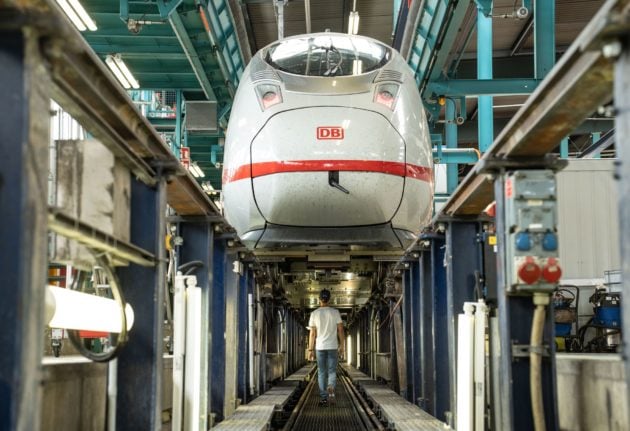On Wednesday, Deutsche Bahn announced plans for its largest modernisation programme to date.
The record sum of €19 billion will help create the capacity needed to meet increased demand, as well as more modern vehicles which will help make the network more climate-friendly and reliable.
“We are now investing in the trains of the future,” CEO Richard Lutz told the Innotrans rail technology trade show in Berlin on Wednesday.
At the trade show, Deutsche Bahn also showed what the regional train of the future may look like and presented a new double-decker wagon. It included special office cabins and family areas, which will go into service in Bavaria from spring 2023.
READ ALSO: REVEALED: The best night trains running through Germany
To enable more people to switch from cars to trains, the company says that around extra 450 highspeed ICE trains will run through Germany in 2030 and, next year, three new ICE trains will hit the tracks every month.
Over the next few years, Deutsche Bahn will be buying trains for long-distance services at a cost of around €10 billion – most of which will be spent on the ICE 4, while around €2.5 billion have been earmarked for 73 ICE 3 Neo trains, the first of which will go into service in December.
The end of Covid restrictions and the introduction of the €9 ticket at the beginning of June has recently given a huge boost to passenger numbers on buses and trains in Germany.
READ ALSO: What we know so far about the successor to Germany’s €9 ticket
According to the Federal Statistics Office, almost 4.8 billion passengers used regular train services in the first half of 2022 alone – over 36 percent more than in the first six months of the previous year.



 Please whitelist us to continue reading.
Please whitelist us to continue reading.
Ah yes, new trains to run on the old and inadequate infrastructure. Strange priorities.